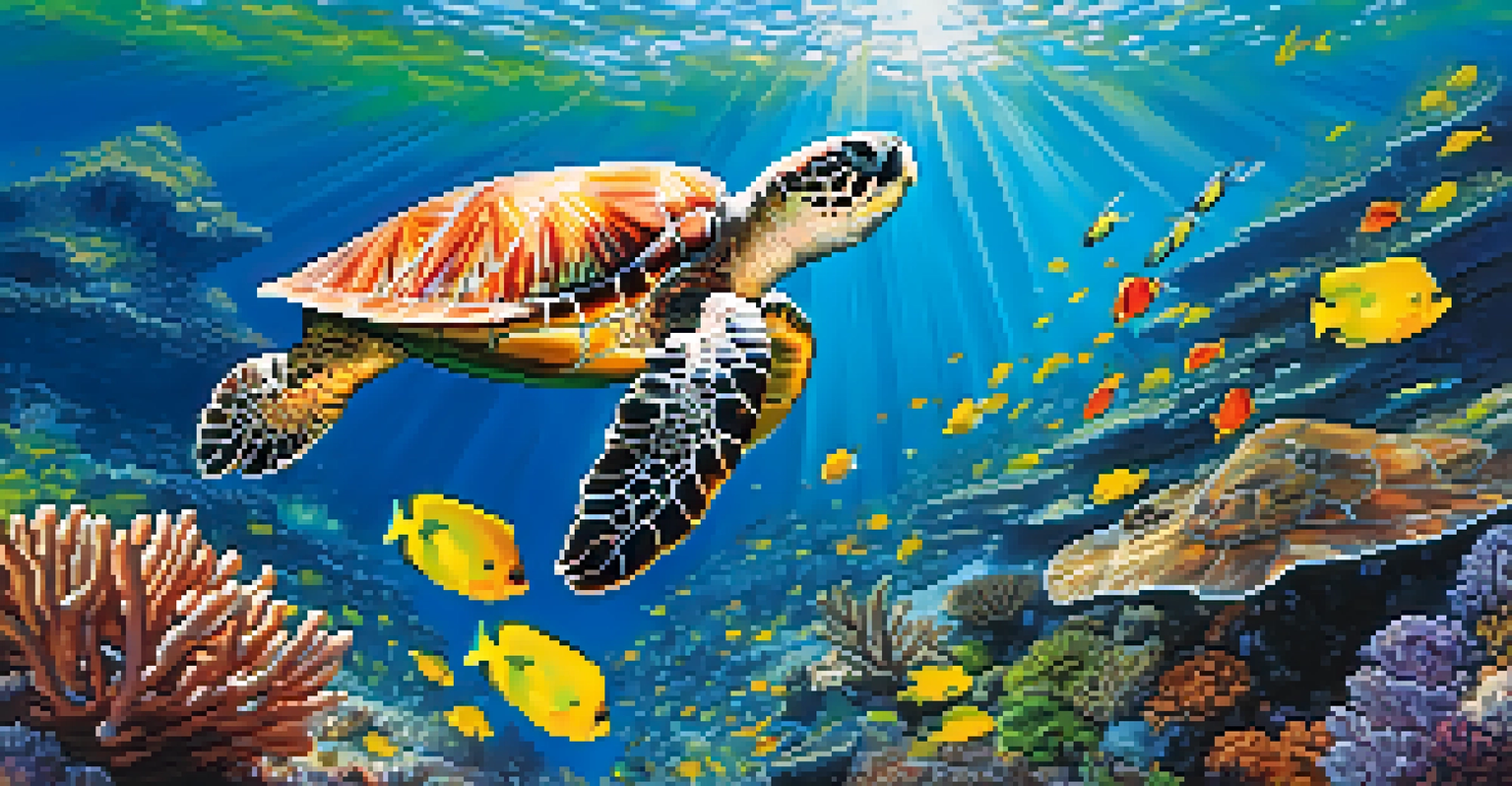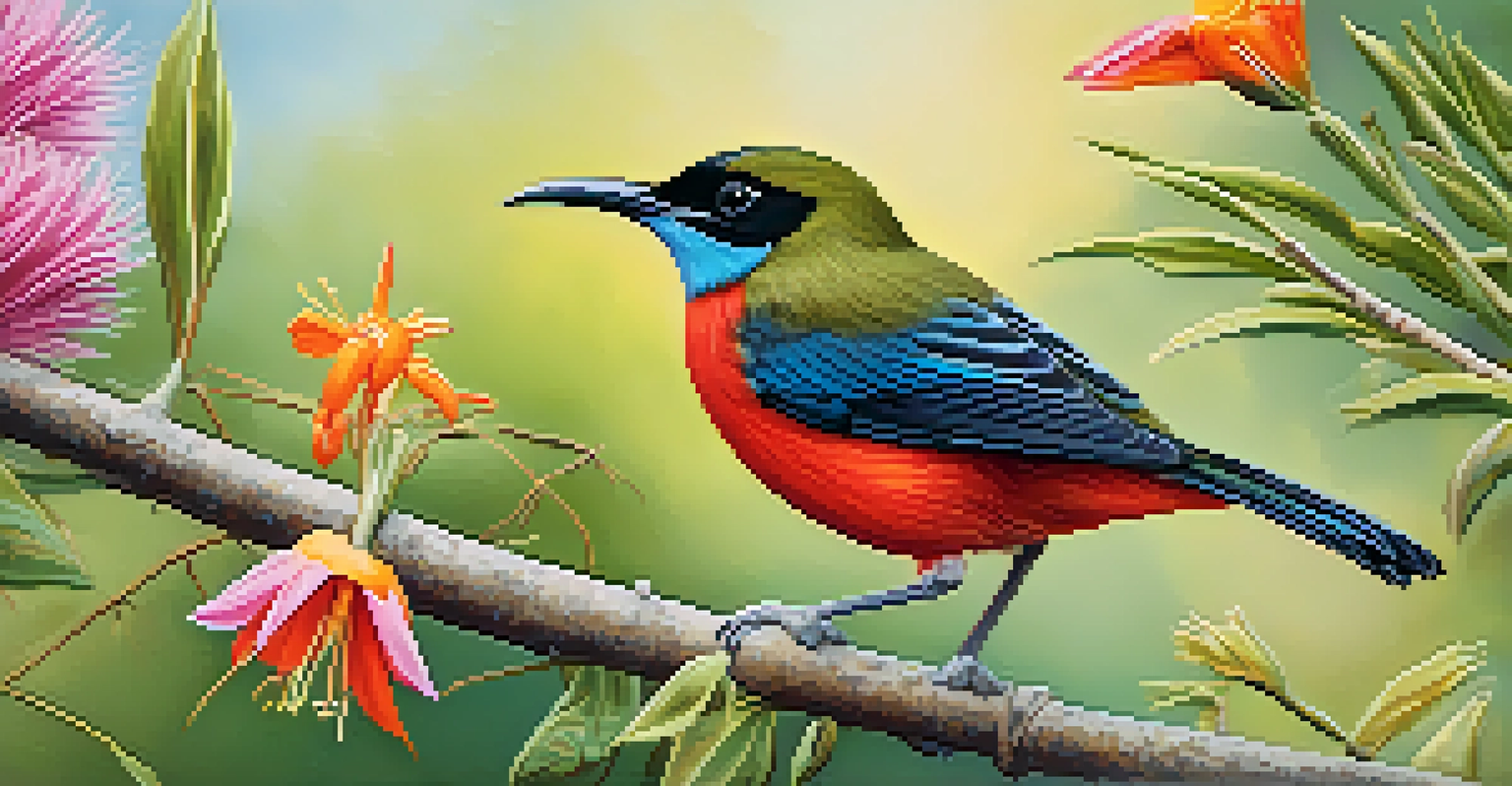The Unique Flora and Fauna of Hawaii's Isolated Ecosystems

Introduction to Hawaii's Isolated Ecosystems
Hawaii, often referred to as the 'Emerald Isle,' is a paradise not just for its stunning beaches but also for its incredible biodiversity. The islands' isolation in the Pacific Ocean has led to the evolution of unique ecosystems that host a variety of plant and animal species found nowhere else on Earth. This isolation has created a rich tapestry of life, where native species thrive amidst the lush landscapes.
The greatest threat to our planet is the belief that someone else will save it.
From volcanic mountains to vibrant coral reefs, Hawaii's ecosystems are as diverse as they are enchanting. The islands' varied climates, ranging from tropical rainforests to arid deserts, support a wide range of flora and fauna. Understanding these ecosystems is crucial, as they play a vital role in maintaining the ecological balance and health of the islands.
In this article, we'll delve into the unique flora and fauna of Hawaii's isolated ecosystems, exploring how these species have adapted to their environments and the challenges they face. Together, we’ll uncover the wonders of Hawaii's natural heritage and the importance of preserving it for future generations.
The Evolution of Hawaiian Flora
Hawaii's flora is a fascinating example of evolution in action. The islands are home to approximately 1,400 native plant species, with about 90% of them found nowhere else in the world. This remarkable diversity is largely due to the islands' volcanic origins and the distance from other land masses, allowing plants to evolve in isolation over millions of years.

One of the most iconic plants is the silversword, a striking flower that can only be found in the high-altitude regions of Hawaii. Its unique adaptations, such as its rosette shape and silver hairs, help it survive the harsh conditions of its environment. Similarly, the ohia lehua tree, which plays a crucial role in the Hawaiian ecosystem, has adapted to thrive in a range of habitats from lava flows to rainforests.
Unique Biodiversity in Hawaii
Hawaii's isolation has led to the evolution of diverse ecosystems, housing numerous native species found nowhere else on Earth.
However, the introduction of non-native species has posed significant threats to Hawaii's unique plant life. Invasive species often outcompete native plants for resources, leading to a decline in biodiversity. Conservation efforts are essential to protect these unique flora and ensure their survival in the face of ongoing challenges.
Hawaii's Unique Animal Species
Just as Hawaii's flora is unique, its fauna is equally extraordinary. The islands are home to various endemic animal species, including the Hawaiian monk seal and the nene, or Hawaiian goose. These animals have developed unique adaptations that enable them to thrive in their isolated environments, showcasing nature's ingenuity.
Nature does not hurry, yet everything is accomplished.
For example, the Hawaiian honeycreeper is a group of birds known for their specialized beaks, which have evolved to feed on specific types of flowers. This specialization not only highlights the interdependence of species in Hawaii's ecosystems but also emphasizes the impact of environmental changes on these delicate relationships. Unfortunately, many of these birds are now endangered due to habitat loss and introduced predators.
The marine life surrounding Hawaii is just as remarkable, with vibrant coral reefs teeming with colorful fish and unusual species like the Hawaiian green sea turtle. These ecosystems are crucial for maintaining the health of the oceans and provide essential resources for both wildlife and local communities. Protecting these unique animal species is vital for preserving Hawaii's biodiversity.
The Role of Pollinators in Hawaii
Pollinators play a crucial role in maintaining the health of Hawaii's ecosystems. The islands are home to unique pollinators, including native bees and the Hawaiian honeycreeper, which help to fertilize native plants and ensure their reproduction. This intricate relationship between plants and pollinators is essential for the survival of many species and the overall health of the environment.
For instance, the Hawaiian lobelia, a native plant, relies on specific pollinators to thrive. The plant has evolved distinctive shapes and colors to attract these pollinators, showcasing the beauty of nature's adaptations. This symbiotic relationship underscores the importance of preserving both plants and their pollinators to maintain ecological balance.
Threats from Invasive Species
Invasive species significantly threaten Hawaii's native flora and fauna by outcompeting them for resources and disrupting ecological balance.
However, many native pollinators are threatened by habitat loss and competition from invasive species. Conservation efforts aimed at protecting these crucial species are vital for sustaining Hawaii's unique ecosystems and ensuring that the delicate balance between flora and fauna continues to flourish.
Invasive Species and Their Impact
Invasive species pose one of the most significant challenges to Hawaii's unique ecosystems. These non-native plants and animals often outcompete native species for resources, leading to a decline in biodiversity. The introduction of invasive species can disrupt the delicate balance that has evolved over millions of years, causing profound changes to the landscape.
For example, the introduction of the feral pig has wreaked havoc on native plants, as they root through the ground in search of food, damaging delicate ecosystems. Similarly, invasive plants like the strawberry guava can quickly overtake native vegetation, choking out essential species and altering habitats. These changes can have cascading effects on the entire ecosystem, affecting everything from soil health to wildlife populations.
Addressing the issue of invasive species requires ongoing efforts from conservationists, local communities, and policymakers. By raising awareness and implementing effective management strategies, we can help protect Hawaii's unique flora and fauna from the threats posed by invasive species.
Conservation Efforts in Hawaii
Conservation efforts in Hawaii are crucial for protecting the islands' unique flora and fauna. Various organizations and government agencies are working tirelessly to restore native habitats, control invasive species, and educate the public about the importance of biodiversity. These initiatives aim to ensure that future generations can enjoy the beauty and diversity of Hawaii's ecosystems.
One notable example is the Hawaii Conservation Alliance, which brings together various stakeholders to collaboratively address conservation challenges. Projects may include habitat restoration, species recovery programs, and public outreach campaigns aimed at fostering a deeper understanding of Hawaii's natural heritage. Such collaborative efforts are essential for creating lasting change and protecting the islands' unique ecosystems.
Importance of Conservation Efforts
Ongoing conservation initiatives are crucial for protecting Hawaii's unique ecosystems and ensuring their survival for future generations.
Community involvement is also a vital component of conservation in Hawaii. Local residents are encouraged to participate in volunteer programs, such as native plant restoration projects or invasive species removal efforts. By engaging the community, these initiatives not only enhance conservation outcomes but also foster a sense of stewardship and connection to the land.
The Future of Hawaii's Ecosystems
The future of Hawaii's unique ecosystems depends on our collective efforts to protect and preserve them. As climate change and human activity continue to threaten these fragile environments, it is essential to prioritize conservation initiatives and sustainable practices. By working together, we can help ensure the survival of Hawaii's incredible biodiversity.
Innovative approaches, such as reforestation and habitat restoration, can help revive degraded ecosystems and support native species. Additionally, education and awareness campaigns can inspire individuals to take action, whether through responsible tourism practices or supporting conservation organizations. Every small action contributes to the larger goal of preserving Hawaii's natural heritage.

Ultimately, the preservation of Hawaii's unique flora and fauna is not just about protecting a beautiful landscape; it's about safeguarding a rich cultural heritage and the interconnected web of life that sustains us all. By committing to conservation efforts, we can help secure a brighter future for Hawaii's ecosystems and the countless species that call them home.